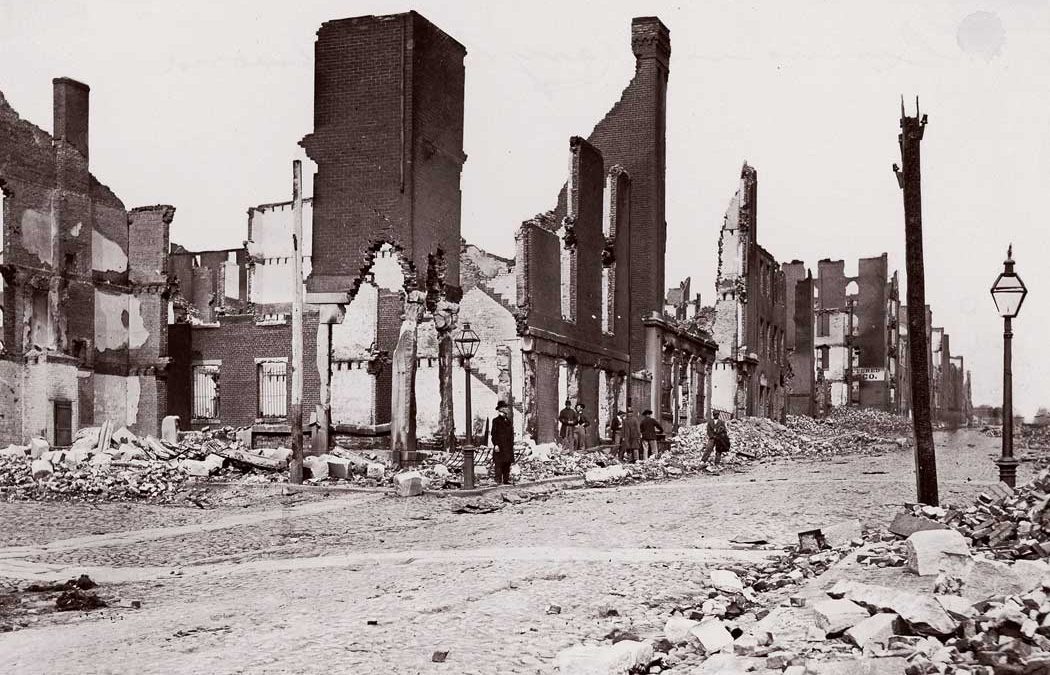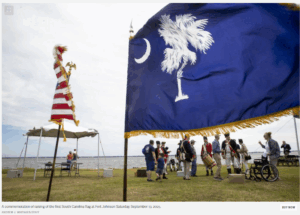The Smithsonian’s National Museum of African American History and Culture (NMAAHC) will debut a new exhibition Sept. 24 exploring an often-overlooked period of history, the Reconstruction era. “Make Good the Promises: Reconstruction and Its Legacies,” featuring more than 175 objects, 300 images and 14 media programs, will be on view through Aug 21, 2022, in the museum’s 4,300-square-foot Bank of America Special Exhibitions Gallery.This exhibition and the release of its companion book form the centerpiece of activities celebrating the fifth anniversary of the museum’s opening Sept. 24.

In the aftermath of the Civil War, more than 4 million newly freed African Americans struggled to define themselves as equal citizens—to own land, to vote, to work for fair wages, build safe communities, educate themselves and to rebuild families torn apart by slavery. Their aim during this period of Reconstruction was to live in a nation that kept the promises laid out in the U.S. Constitution. Black men were granted voting rights and were elected to political offices including seats in the U.S. Congress, Black families acquired land and started farms, and communities built churches and schools. But not everyone celebrated the end of slavery. Many responded with violence ranging from unlawful incarceration and voter intimidation to lynching and mass shootings.
“Reconstruction was a pivotal moment in American history when the nation had an opportunity to make amends for the injustices of slavery and rebuild itself on a new foundation of racial equality,” said Kevin Young, the Andrew W. Mellon Director of the National Museum of African American History and Culture. “While some gains were made, this was also a period of voter suppression, racially motivated violence and unlawful incarceration. These are the legacies of Reconstruction explored in this important exhibition. Because of the work left unfinished by Reconstruction and the decades of discrimination that followed, the struggle for equality and justice continues in society today.”
Historians regard the Reconstruction era, from 1865 to 1877, as one of the least-understood periods in American history and a period filled with contradictions. Despite the passage of the 13th, 14th and 15th amendments, which outlawed slavery, granted citizenship and gave Black men the right to vote, racially motivated violence was prevalent and unfair labor practices created the system of sharecropping.
In March of 1865, Congress created the Bureau of Refugees, Freedmen, and Abandoned Lands, commonly known as the Freedmen’s Bureau. This federal agency operated in 15 states throughout the South to help the newly freed acquire land, reunite with their families and establish schools, including a number of historically Black colleges and universities including Fisk, Howard, Morehouse and Spelman. But the Freedmen’s Bureau was abolished in less than seven years and the Freedmen’s Bank allowed to fail. Gains African Americans made during Reconstruction were rolled back after white supremacists regained control of southern state governments through voter suppression and intimidation.
Highlights of Objects From the Exhibition
Desk and Chair used in the U.S. House of Representatives during Reconstruction. Perhaps the most visible example of African American political gains during Reconstruction was the election of Black senators and representatives to the U.S. Congress. For the first time in history, Black men served as the nation’s lawmakers. While these officials represented the newly freed constituents of their southern states, they also advocated for the rights of African Americans nationwide. (On loan from the Collection of the U.S. House of Representatives)
Freedman’s Savings Bank letter written by Frederick Douglass. Chartered by Congress in March 1865, the Freedman’s Savings Bank promised newly freed African Americans a safe place to deposit their money. But due to corruption and mismanagement on the part of the bank’s white trustees, the bank collapsed in 1874. Over 60,000 depositors lost nearly $3 million in savings. About 40% of those funds were never repaid. In March 1874, to reassure African American depositors, Freedman’s Savings Bank officials elected Frederick Douglass as president. But Douglass soon realized the bank was insolvent and advised Congress to shut it down to prevent further losses. He wrote this letter to one of the commissioners appointed to take charge of the bank’s assets.
Petition of Colored Citizens of South Carolina for Equal Rights Before the Law, and the Elective Franchise, 1865. This 54-foot-long petition bears the signatures of hundreds of men who participated in the State Convention of Colored People of South Carolina, held in Charleston in November 1865. The petitioners asked Congress to help them secure “our equal rights before the law,” including the right to vote. Some signers later served in the state legislature. (On loan from the Library of Congress)
Bodice attributed to Louvinia Price, 1860–1874. Born enslaved in Alabama, Louvinia Price worked as a dressmaker after gaining freedom. This silk moiré bodice is part of an ensemble believed to have been made by Price for a former employer, who later returned it to her.
Apron owned by Harriet Tubman. Better known for her efforts on the Underground Railroad, Harriet Tubman (1822–1913) also served the U.S. Army during the Civil War as a nurse, cook, scout and spy. For 34 years, she lobbied the government to grant her a veteran’s pension. Congress eventually awarded her compensation, though her service was not officially recognized. Meanwhile, Tubman continued her work, raising money for the Freedmen’s Bureau, supporting women’s right to vote and caring for the elderly.
Church pew. Enslaved African Americans sat in segregated seating in the balcony of the Presbyterian Church on Edisto Island, South Carolina, until the Civil War. When the white congregants left with the arrival of U.S. troops, freed people moved to the main floor and held their own services, led by an African American minister. They also established a school at the church. (On loan from The Charleston Museum)
The hooded sweatshirt 17-year-old Trayvon Martinwas wearing Feb. 26, 2012, when he was fatally shot by a white neighborhood watch volunteer, sheds light on the history of racial profiling.
Clothing worn by Albert Woodfox and Herman Wallace, two members of the Angola Three who wrongfully served decades in solitary confinement at the Louisiana State Penitentiary, the maximum-security prison farm known as Angola, helps tell the story of race, mass incarceration and convict leasing as a legacy of Reconstruction.
Stained-glass windows depicting Confederate Gen. Robert E. Lee, constructed in the 1950s and removed from the Washington National Cathedral in 2017, shed light on the long-term practice of myth-building and the nationwide intimidation of African Americans through the embrace of Confederate symbols. They also call attention to contemporary efforts to remove these memorials and symbols from public view. (On loan from the Washington National Cathedral)
A helmet worn by Bree NewsomeJune 27, 2015, when she climbed the flagpole on the grounds of the South Carolina State House and removed a Confederate flag in the immediate aftermath of the massacre at Emanuel AME Church in Charleston, helps explore the history of civil disobedience done in response to discrimination and racially motivated violence. (On loan from the Bree Newsome Bass family)
Election-night dress, campaign buttons and a fanfrom the unsuccessful Georgia gubernatorial campaign of Stacey Abrams in 2018 help track the contemporary history of voting rights, Black women candidates and voter suppression through restrictions ranging from unfair ID requirements to outlawing early voting, which disproportionately impacts Black and brown people, the elderly, and people with disabilities.
The exhibition is presented with a companion book,Make Good the Promises: Reclaiming Reconstruction and Its Legacies. The 224-page book, published by Amistad, features nine essays by noted historians, including Eric Foner, the Dewitt Clinton Professor Emeritus of History at Columbia University and author of more than 10 books on Reconstruction, and Kimberlé Williams Crenshaw, a professor of law at the UCLA and Columbia University. NMAAHC contributors include Spencer Crew, director emeritus of NMAAHC; Kathleen Kendrick, curator; Candra Flanagan, director of teaching and learning; and Mary Elliott, curator of American slavery. The book’s editors are Kinshasha Holman Conwill, deputy director of NMAAHC, and historian Paul Gardullo, director of the museum’s Center for the Study of Global Slavery.
Located at 1400 Constitution Ave. N.W., the museum is operating under reduced hours in response to the COVID-19 pandemic. The museum is closed to the public Monday and Tuesday and open Wednesday through Sunday from 10 a.m. to 5:30 p.m. except Dec. 25. Admission is free. Timed entry passes are required and available a https://nmaahc.si.edu/.
–southernmarylandchronicle.com



